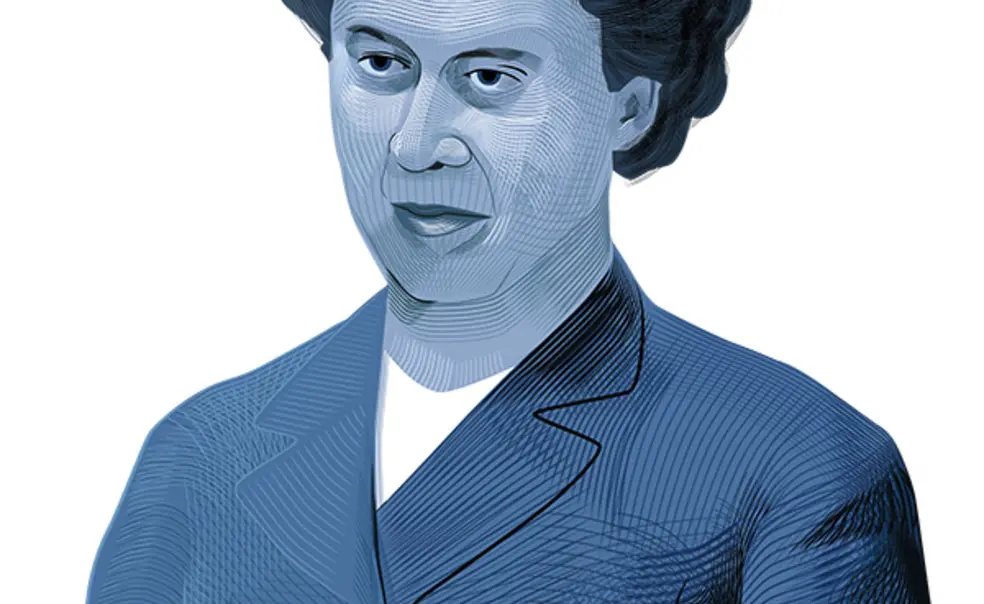Princeton Portrait: A Chronicler of the Revolution She Lived
Helen Baker (1900-1955)
When World War II sent women into factories and offices in numbers far higher than the United States had ever seen — and into shipyards, lumberyards, firehouses, mines, mills, and secret military installations — Helen Baker, a labor expert in the University’s economics department, was ideally situated to observe this shift. Baker herself lived in two worlds.
As the only woman in her department’s faculty, and one of the only women in Princeton’s faculty, she knew what it was to be a woman in a place where nobody in power had ever expected her to go. (Eventually, she became the first woman at Princeton to hold the position of associate professor.) And she also lived large in the social world of women on campus — the world, which the faculty so often ignored, of faculty wives, librarians, human computers, and art historians who worked in the secular nunnery of the Index of Christian Art. She won bridge tournaments. She put on plays with the Women’s College Club. She stabbed and parried with the Needlework Guild.
She didn’t leave one world to master another. She did both. In the process, she chronicled a revolution while also living it.
Baker grew up in Everett, Pennsylvania, as one of five children. She graduated from Radcliffe College in 1921, then earned a master’s degree in administration from the Carnegie Institute of Technology, now Carnegie Mellon University. From there, she worked as a consultant for the Cooper Underwear Co. and for a department store, Kaufmann’s. In 1930, she started a new job as a research assistant and librarian in the Industrial Relations Section of the economics department; she would stay in the department for the rest of her career. (She lived in an apartment with her sister at 104 Mercer St., a few houses down from Albert Einstein.)
Over the next 25 years, Baker authored or co-authored more than 20 reports, which were often discussed in the national news media, on important employment and labor issues of the day. How can employers shore up employee morale during a depression? How many hours are most productive for a wartime economy’s work week? How can a wartime economy successfully transition to a peacetime economy?
When her work discussed the new labor force of women, it touched on matters that few of the men in her department would think to investigate. How many restrooms do women employees need? How do they feel walking home after dark, and what can be done to respond to their fears? How much are employers paying women in comparison with men who do the same work?
In 1942, Baker published a book, titled Women in War Industries, that advised employers on how best to work with the women who were pouring into their factories. Whereas Britain had instituted a compulsory registration, a legacy of the previous world war, so many women in the U.S. were volunteering for work that Baker suggested a registration system would be unnecessary: “The flood of women applicants has been almost embarrassing to the employment offices and war industries.”
During the Great Depression, both states and industries set policies “to discourage and limit the number of women in industry,” she noted. Many companies set the minimum hiring age for women at 18, the maximum age at 30, limited the possible work hours, and required women employees who married to resign. Now, states were scrambling to change the laws to keep their economies going. One of Baker’s distinctive contributions was to argue that helping women in the workplace would require policymakers to improve conditions for them outside of the workplace: “Probably the greatest need of planning will not be in the plant, but in the community.”
The University had to request a special action from its Board of Trustees to award Baker the status of associate professor, which it did in 1948. Soon afterward, she helped faculty wives put on the annual Princeton Community Flower Show. She understood that a campus doesn’t stop in the classroom, nor a workforce in the workplace. Perhaps she discussed such things with Dean Luther P. Eisenhart, the chairman of the math department — and one of the few men who belonged, like her, to the Needlework Guild.












No responses yet